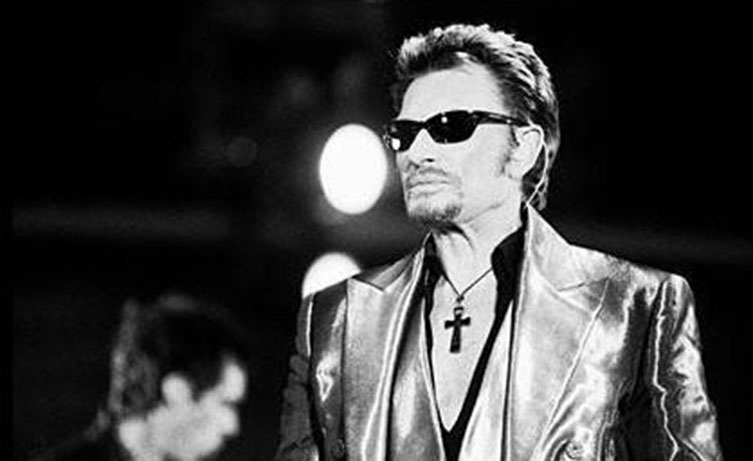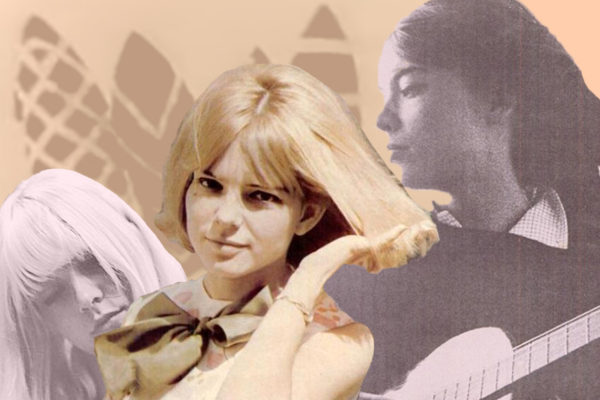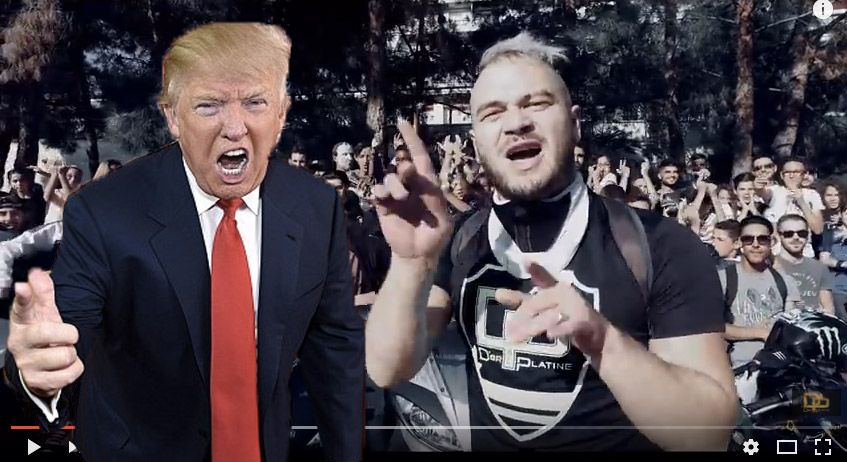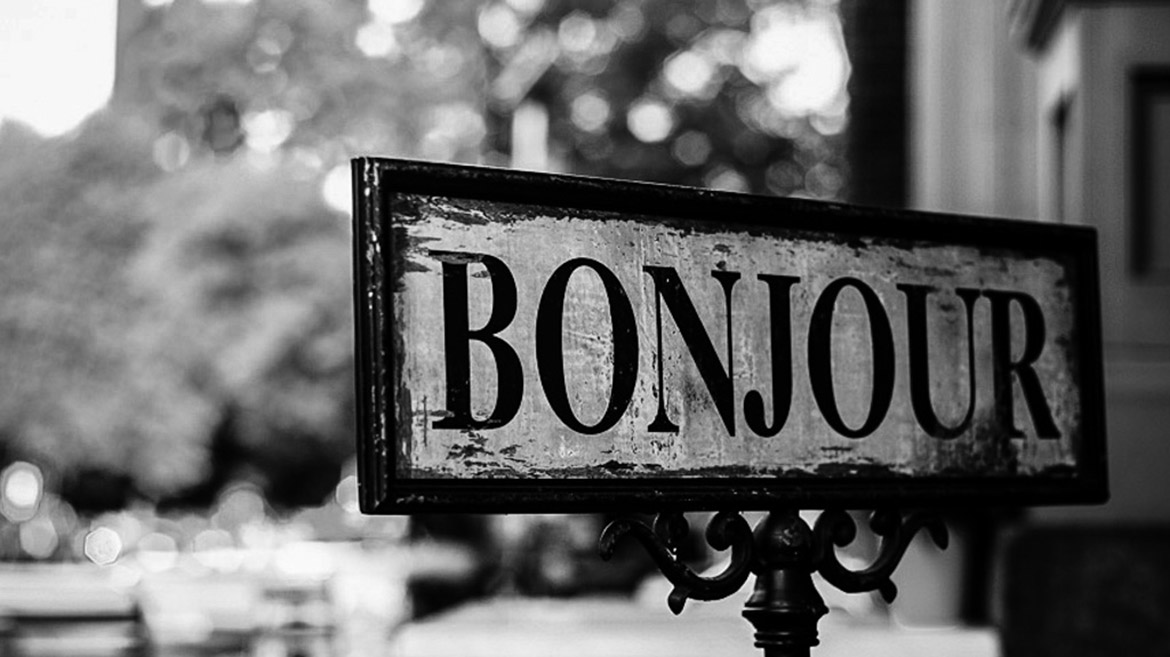
The biggest rock star you’ve never heard of
If you have lived in France longer than five minutes, you will have been made aware of a person known as Johnny Hallyday. You may even recognise his dyed hair, his carefully cultivated beard (favoured by men over 50 wanting to appear rebellious), the leather clothes that Bono rejected for being too camp, the ill-fitting eyes, like he’s wearing a mask of his own face.
But before we dismiss him as a sort of holiday camp entertainer, look at his record sales: 80 million worldwide. To put that into context, that’s not as many as Bryan Adams (100 million) but more than Beyoncé (75 million). Beyoncé. I know.
But can you hum a single Johnny Hallyday song? If a completely bizarre serial killer offered you your life in return for a few bars of his biggest hit, could you do it? I couldn’t. Well, couldn’t until I’d written this article. Now I could hum several. I could hum a MEDLEY (in yo face, serial killer of my imagination). And you know what, I actually like a few of them.
But before we listen to ‘the French Elvis’, let’s do a quick primer on his career.

Image: Best France Forever (Eiffel Tower Icon Designed by Freepik)
We’re good now with the basic facts, ouais? It’s time to listen to his biggest, most iconic hits.
‘Souvenirs, Souvenirs’ (Johnny Hallyday, 1960, Vogue Records).
First impressions: not at all bad. It’s got that early sixties sound. A little bit Buddy Holly. I can imagine teenagers bopping to this. My toes involuntarily tap merrily along with the fresh, innocent beats.
Retiens la Nuit (Johnny Hallyday, 1962, Philips)
BOOM upbeat strings. Deeper vocals here with a distinctly Elvis wobble. No shame, Johnny, most other singers were doing the same thing at this time. Once again I find myself enjoying his music far more than expected. This is going well.
Le Pénitencier (Johnny Hallyday, 1964, Philips)
Wait, what? This is ‘House of the Rising Sun’ by The Animals. I’m confused. It sounds like Johnny’s doing karaoke but is making up his own words. Instead of being A Song About A Brothel, it’s now A Song About Prison. Part of the lyrics are about his mum having to sell her wedding dress because of his crime – to pay for a lawyer perhaps? This is dark stuff. A definite change in direction and a step away from the teeny-bop material. This must be the sixties equivalent of getting tattoos and being arrested for DUI (yes, I’m referring to you, Bieber).
Special mention for the video which sees Our Johnny dressed in black, (and invoking, intentionally or not, another Johnny – Johnny Cash) walking along a giant stylised keyboard. My only criticism of JH’s interpretation is that his vocals are kinda croony at times. It feels a little late in the sixties to be doing this.
Noir c’est Noir (Johnny Hallyday, 1966, Philips)
Yes! Consider me loving this video. Perhaps building on the success of the previous video’s black and white stylings, Johnny is standing in a checkerboard set with groovy female dancers, dressed in white, red and black skin-tight catsuits. Black catsuit lady is hopelessly out of time but she’s the blonde one so gets to be Johnny’s love interest. Life, eh? Musically speaking, we have the hammond organ and a brass section one would expect from a single released in 1966. It reminds me of something Tom Jones would come out with but much darker in theme. This song came at a bleak time for Johnny (the same year as his suicide attempt) and the lyrics convey something of that desperation.
Que Je T’aime (Johnny Hallyday, 1969, Philips)
This is the music you hear in depressing holiday restaurants with wine bottles in wicker baskets, red candles, sun-faded posters on the wall. You are surrounded by bored waiters and lonely couples. Conversation is limited to recriminations. And in the background, Johnny is wailing “I love you” repeatedly like a drunk in the street.
Gabrielle (Johnny Hallyday, 1976, Philips)
The image on the video that pops up in YouTube is disturbing because it reminds me instantly of British paedophile and pop star, Gary Glitter. That’s not Johnny’s fault but it’s unsettling all the same.
The song starts out with an almost country feel, courtesy of handclapping and the upbeat rhythm guitar. No sooner has this impression made itself in my consciousness than it changes style. The song keeps changing directions. Johnny has adopted a club singing style. A brass section is back, as is a backing vocals. It reminds me a little of Neil Diamond so I listen to Sweet Caroline on YouTube and am almost weeping with regret at having to go back to Johnny. SWEET CAROLINE (BAM BAM BAM) GOOD TIMES NEVER SEEMED SO GOOD! True words, Neil, true indeed.
Ma Guele (Johnny Hallyday, 1979, Philips)
This feels like the natural successor to ‘Que Je T’aime’. We’re in very similar territory: Johnny is angry, probably at a woman. His vocals are foregrounded, the instruments take a back seat apart from some noodly keyboards (which I actually quite enjoy) and prosaic electric guitar (which I don’t). This is a song for men to shout along to in stadiums. I imagine it’s quite cathartic.
La Musique Que J’aime (Johnny Hallyday, 1982, Philips)
Just when you think you’ve got an idea of who Johnny is, he goes and changes on you. This one opens with the distinctly blues-y feel – a fact confirmed by JH who sings an empassioned defense of his love of the blues. His singing style is quite shouty now. There is a disctinct rasping quality to his voice.
Quelque Chose de Tennessee (Johnny Hallyday, 1985, Philips)
What a pleasant surprise! I wouldn’t go as far as to say it was good but it sounded like a song. Plus the video was entertaining. (Johnny, sombre and alone, travels across an Americana-filled landscape to stand in the background at a funeral. He does good moody.)
Originally published: 5 March 2016





